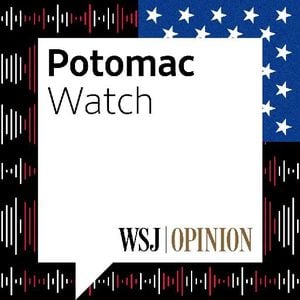The global semiconductor industry is currently undergoing significant transformations, driven by geopolitical tensions, technological innovation, and strategic investments from multiple nations. The semiconductor sector, a backbone of modern technology, has become increasingly competitive, particularly between the United States and China. Recent developments highlight not only the strategic importance of semiconductor production to national security but also the dynamic shifts within industry landscapes as companies adapt to ever-changing global trade policies.
At the forefront of this conversation is the recent announcement involving NY CREATES, which has been awarded $825 million to establish a federally supported chip research center at Albany NanoTech, New York. This award is part of the larger CHIPS and Science Act, which aims to bolster domestic semiconductor manufacturing and research capabilities. U.S. Senate Majority Leader Chuck Schumer expressed excitement over this development, stating, “The whole world will look right here in the Capital Region to see the next developments in advanced chip research.” Albany NanoTech is touted as the “beaten heart” of the National Semiconductor Technology Center (NSTC) and will serve as the hub for cutting-edge research, positioning the U.S. to reclaim its competitive edge.
A major aspect of the global semiconductor narrative is China's growing dominance and the U.S. response to it. The competitive nature of the sector has led to strategic partnerships and investments aimed at bolstering local capabilities. China, which accounts for approximately 80% of global solar shipments, is faced with difficulties as the U.S. imposes tariffs on solar materials. These tariffs have spurred Chinese solar manufacturers to move operations to countries like Vietnam, Indonesia, and Laos, aiming to bypass these duties. For example, reports indicate significant expansions of manufacturing capabilities just outside the reach of U.S. tariffs, with at least four major projects successfully launching within the last eighteen months alone.
Chinese firms are not just meeting local needs but are positioned to enter the lucrative U.S. market, with prices significantly higher than their home market. According to SPV Market Research, China’s ability to mass-produce semiconductors enables the seamless flow of goods to the U.S., where imports have ramped up significantly. For the U.S. solar sector, nearly all solar imports are now coming from other Southeast Asian countries where Chinese firms have relocated their operations. The complexity of these supply chains points to the need for stricter U.S. tariffs and regulations to stem the tide of what many lawmakers view as unfair competition.
While the semiconductor industry might sound overly technical, it’s worth noting how intricately tied it is to everyday life. From smartphones and appliances to the latest electric vehicles, semiconductors play pivotal roles. The increasing reliance on these chips has prompted countries, including the U.S., to ramp up production and maintain technological independence. Legislation crafted to combat China’s influence shows strong bipartisan support, reflecting the geopolitical realities of our time.
Recent measures undertaken by the U.S. government are reminiscent of the strategies employed during the Cold War, focusing on key industries deemed fundamental to national security. The establishment of research hubs, like the one at Albany NanoTech, is expected to drive innovations not just for the U.S. market but potentially raise competition globally. Crucially, the investments made here are also meant to safeguard against supply chain disruptions akin to those witnessed during the COVID-19 pandemic, where shortages of chips severely affected numerous industries.
Reinforcing these domestic developments, Chinese companies are not backing down easily. They have displayed remarkable agility, with multiple solar plants launching production capabilities outside the U.S. tariffs' reach. This “cat and mouse” scenario, described by trade experts, encapsulates the lengths to which companies will go to avoid restrictive trade measures. Observers note, “It’s not hard to move. You set up and play the game again.” With production facilities now established and planned across Southeast Asia, Chinese manufacturers will likely dominate solar exports to the U.S., creating friction with American producers who argue about the excessive subsidies these foreign firms receive from their government.
What's intriguing about this current phase of the semiconductor saga is how it intertwines with domestic politics and global strategies. Trade complaints from U.S. manufacturers about competition from foreign counterparts reflect broader concerns about dependency and control over technology sectors. Republican lawmakers voice their intent to tighten regulations, urging, “The American public should demand much stricter enforcement of tariffs.” This sentiment resonates across the partisan divide as both sides recognize the risks posed by reliance on foreign supply chains.
While the United States focuses on fortifying its semiconductor foundation, the influence of foreign markets remains potent. The dynamic nature of this industry, characterized by rapid adaptation and shifting global landscapes, showcases the intense competition prevalent worldwide. Going forward, the capacity of both domestic efforts and international responses will shape not only the semiconductor industry but also the technological innovations we rely on daily. A balanced approach blending investments with strategic regulation might be necessary to navigate this complex ecosystem effectively.
Addressing these challenges isn't solely the responsibility of governments; collaboration between public and private sectors, as well as global partnerships, will be key. For example, as the announcement of the NSTC at Albany NanoTech reflects, the relationship among academic institutions, regional governments, and semiconductor firms can prove incredibly fruitful for all parties involved. This collaboration potentially provides the U.S. with not just manufacturing capabilities but also the kind of innovation necessary to maintain its competitive edge on the global stage.
Looking at the scenario from the lens of innovation and investment, there is hope mixed with anxiety. Investors are watching closely; for example, as Chinese firms shift production toward nations without heavy U.S. tariffs like Indonesia, there’s concern about how the American market will respond when faced with competition from these manufacturing powerhouses. The recent dynamics indicate the course toward self-sufficiency for the U.S. should not be perceived merely as defensive but as part of a broader strategic vision aimed at fostering long-term national interests.
The semiconductor narrative continues to evolve, teetering between collaboration and competition, innovation and regulation. The outcomes of these developments will likely affect more than just the tech industry; they’ll shape trade relationships and economic strategies globally. The stakes are incredibly high as governments and corporations alike endeavor to strike the right balance between fostering innovation and ensuring national interests are securely protected. With the stakes as high as they are, all eyes will remain fixed on how this electric dance between competition and cooperation plays out on the global stage.



